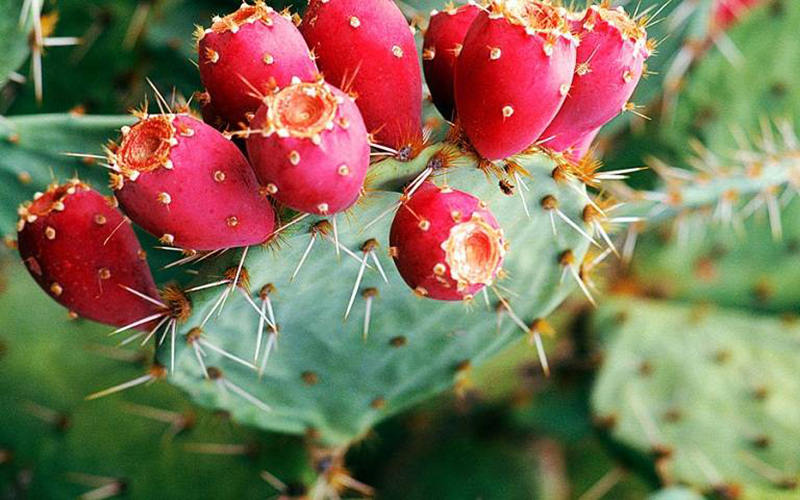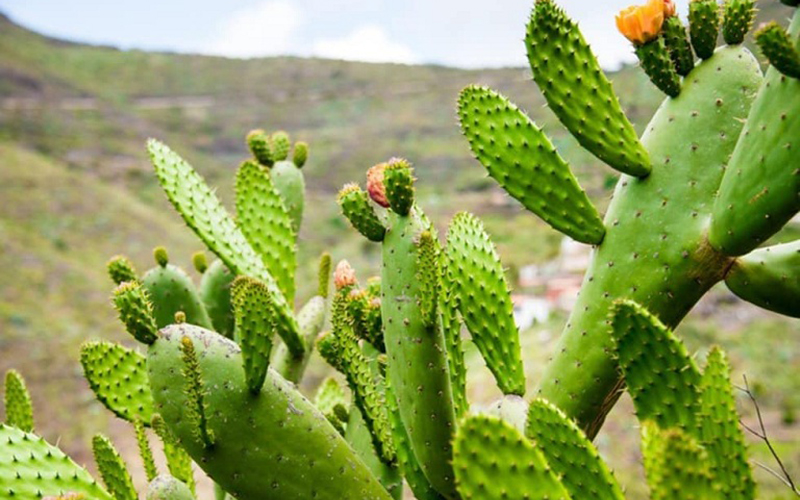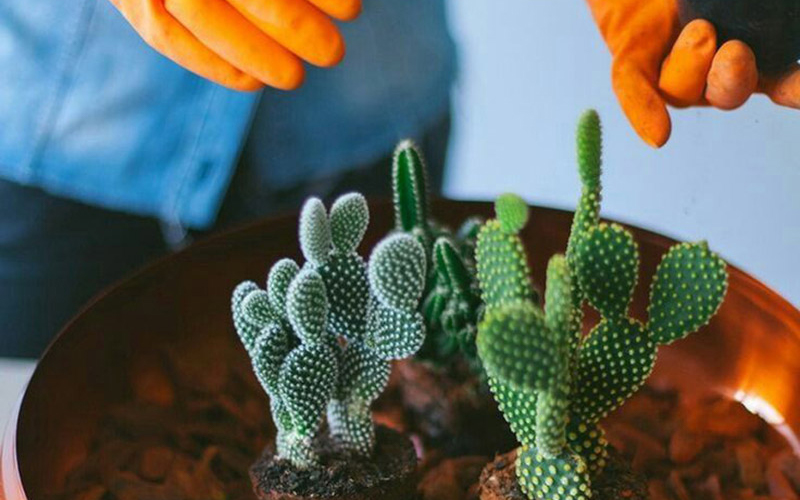The rabbit ear cactus, or Opuntia microdasys, is a fascinating succulent with a unique appearance. Native to northern and central Mexico, this cactus has gained popularity for its ease of growth and stunning flowers. Let’s delve into the world of the rabbit ear cactus and explore its characteristics, cultivation, and care tips to ensure vibrant and healthy blooms.
1 Introduction to the Rabbit Ear Cactus
 The majestic size of the rabbit ear cactus
The majestic size of the rabbit ear cactus
The rabbit ear cactus, also known as Opuntia microdasys, belongs to the Cactaceae family and is native to the deserts and semi-deserts of Mexico. Its distinctive feature is its flattened, ear-like pads covered in tiny, harmless spines, giving it a soft and fluffy appearance. This cactus is easy to grow and care for, making it a popular choice for gardeners and plant enthusiasts alike.
Aside from its aesthetic appeal, the rabbit ear cactus is also prized for its medicinal properties and culinary uses. In Vietnam, it is considered a delicacy in Quang Nam province, and its various parts contain beneficial compounds such as fumaric acid, tartaric acid, and citric acid.
2 Characteristics of the Rabbit Ear Cactus
 A closer look at the flowers of the rabbit ear cactus
A closer look at the flowers of the rabbit ear cactus
The rabbit ear cactus gets its name from its distinctive shape, resembling a pair of rabbit ears. Like its cactus cousins, it has a green body covered in tiny spines that help with water retention. The cactus typically grows with a main stem and two smaller branches, though it can occasionally produce more. Its maximum height is a few meters, and it boasts stunning yellow or red flowers.
The fruit of the rabbit ear cactus is green, turning red when ripe, and contains around 3000 seeds. Interestingly, the spines can transform into leaves if the cactus is grown in shaded conditions. These leaves are typically thick and have short stems.
3 Benefits and Uses of the Rabbit Ear Cactus
Culinary Uses
 Rabbit ear cactus, a culinary delight in Quang Nam
Rabbit ear cactus, a culinary delight in Quang Nam
The rabbit ear cactus is a versatile ingredient in Mexican cuisine, where it is used in a variety of dishes, including tacos, tortillas, bread, and salads. In Vietnam, it has been creatively incorporated into local dishes, particularly in Quang Nam province, with recipes such as boiled cactus, stir-fried cactus, cactus soup, and cactus salad.
Medicinal Uses
 The rabbit ear cactus is a valuable medicinal plant
The rabbit ear cactus is a valuable medicinal plant
According to traditional medicine, the rabbit ear cactus is beneficial for dental issues like toothaches and cavities. It is also used to treat stomach inflammation, intestinal inflammation, and malaria. Different parts of the plant have specific uses: the leaves are used for treating urinary problems and skin infections, while the sap is effective against liver cirrhosis, joint pain, neuralgia, warts, and skin diseases.
Modern medicine has also recognized the potential of the rabbit ear cactus. Its consumption can help lower cholesterol levels, prevent cancer, support diabetes management, reduce inflammation, protect brain cells, and improve digestion.
4 Cultivation and Care Tips for the Rabbit Ear Cactus
Planting Techniques
 A lush grouping of rabbit ear cacti
A lush grouping of rabbit ear cacti
Propagation of the rabbit ear cactus is typically done through cuttings or seeds, with the latter being more common due to the technical skills required for successful cuttings. Here’s a simple guide to growing rabbit ear cacti from seeds:
Care Instructions
 A step in the process of cactus branch cutting
A step in the process of cactus branch cutting
Water
While cacti are drought-tolerant, the rabbit ear cactus still requires some water to maintain moisture balance. Water the plant once a week, providing approximately 30-40ml of water each time, to avoid waterlogging.
Light
As a desert plant, the rabbit ear cactus thrives in direct sunlight. If grown indoors or in shaded areas, ensure it receives ample sunlight by placing it near a window or taking it outside for sunbathing 2-3 times a week.
Temperature
The rabbit ear cactus can withstand temperatures ranging from 10°C to 50°C, but it grows optimally between 15°C and 28°C. Extreme temperatures can be detrimental to its health.
Pest and Disease Control
Common issues with the rabbit ear cactus include root rot, anthracnose, and mealybugs. Root rot is characterized by dark spots in black, gray, red, purple, or white colors. It is often caused by improper branch cutting techniques. To prevent this, sterilize cutting tools and use soil and fertilizer with minimal mold content. Remove any infected branches to prevent the spread of the disease.
Anthracnose, indicated by watery brown spots, usually occurs during the summer and early winter. Keep the plant in a dry and well-ventilated area, and reduce watering. Mealybugs, which suck the plant’s sap, can be controlled by regular inspections, manual removal, and the use of insecticides.
Propagation
Propagation through branch cutting is typically done in the spring. Choose healthy, robust branches and cut them cleanly. Allow the cuts to dry and scab over before planting them in prepared pots. Ensure the cuttings are firmly planted, and within 20-25 days, they should develop roots. Place the newly propagated cacti in a shaded area with good airflow, ideally at a temperature of 25°C.
5 Where to Buy and Price Range
 Rabbit ear cacti are popular decorative plants
Rabbit ear cacti are popular decorative plants
The rabbit ear cactus is widely available at flower gardens, decorative plant shops, and online retailers. Prices vary depending on the size and quality of the plant, typically ranging from 40,000 to 120,000 VND.
6 Important Notes When Buying and Growing Rabbit Ear Cacti
 Small rabbit ear cacti make charming decorations
Small rabbit ear cacti make charming decorations
During the rainy season, protect your outdoor cacti from waterlogging by bringing them indoors or covering them. Use nutrient-rich, well-aerated soil for optimal growth. Always sterilize cutting tools and soil before branch cutting to prevent infections. Repot your cactus every 1-2 years to provide sufficient space for healthy growth.
Now you have all the information you need to care for and enjoy your very own rabbit ear cactus. Add a touch of nature to your home or garden with this unique and captivating plant. If you have any further insights or experiences with the rabbit ear cactus, feel free to share them with us!

































